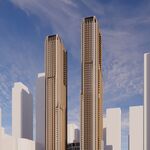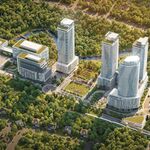March 19, 2018
Why doesn’t London build an RER network, like Paris did?
By
Jonn Elledge
I’ve heard many people make many different complaints about the Parisian transport system. That it does a bad job of linking a rich, white city with its poorer, more diverse suburbs. That, even as subway systems go, it’s a hostile environment for women. That the whole thing smells distractingly of urine.
I’m familiar with all of these complaints – I’ve often smelt the urine. And I’m aware that, in many ways, London’s is the superior transport network.
And yet I can’t help be jealous of Paris – In large part, because of the RER.
Paris, you see, has not one but two underground railway systems. The more famous one is the original Paris Metro, opened in 1900: that’s the one with those fancy green portals with the word “metropolitain” written above them in a vaguely kooky font.
The Metro, though, mostly serves
Paris Intra-muros: the official city, inside the Boulevard Périphérique ring road, site of the city’s last set of walls. As a result, it’s of very little use in most of the city’s suburbs. Its stations are very close together, which places a limit on how fast its trains can cross town. It was also, by the mid 20th century, becoming annoyingly overcrowded.
So starting in the 1960s, the city transport authorities began planning a second underground railway network. The Réseau Express Régional – Regional Express Network – would link suburban lines on either side of Paris, through new heavy rail tunnels beneath the city. Its stations would be much further apart than those of the metro – roughly one every 3km, rather than every 600m – so its trains can run faster.
And fifty years and five lines later, it means that 224 stations in the suburbs of Paris are served by trains which, rather than terminating on the edge of the city, now continue directly through tunnels to its centre.
London is, belatedly, doing something similar. The Elizabeth Line, due to open
in stages from later this year, will offer express-tube style services linking the suburban lines which run west from Paddington to those which run east from Liverpool Street. And Thameslink has offered cross-town services for 30 years now (albeit not at tube-level frequencies). That, too, is going to add more routes to its network over the next few years, meaning direct trains from the southern suburbs to north London and vice versa.
Yet the vast majority of suburban National Rail services in London still terminate at big mainline stations, most of which are on the edge of the centre. For many journeys, especially from the south of the city, you still need to change to the London Underground.
So, could London ape Paris – and make Thameslink and Crossrail the first element of its own RER network?
In a limited way, of course, it’s doing just that. The next big project after Crossrail is likely to be (original name, this) Crossrail 2. If that gets funding, it’ll be a new south-west to north-east route, connecting some of the suburban lines into Waterloo to those in the Lea Valley.
[...]





